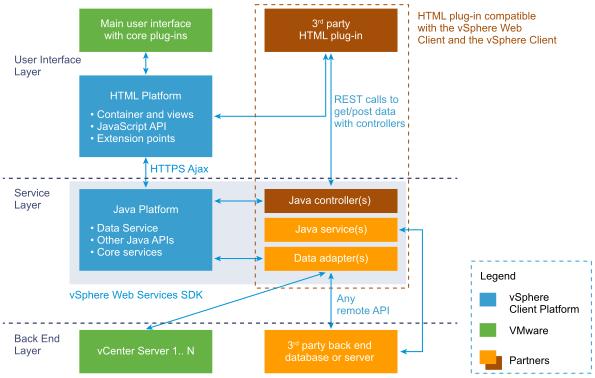The user interface layer
consists of an HTML platform that provides a plug-in architecture for the
extensions displayed in a Web browser. The HTML application contains all user
interface elements with which the user interacts, such as menus, commands, home
screen shortcuts, and other views. You can use the user interface elements to
view information about an object in the vSphere environment, send a command,
and make changes to your vSphere infrastructure.
The HTML platform ensures
that each plug-in view is isolated from the
vSphere
Client
application which allows you to use the UI
technology of your choice when developing HTML plug-ins. You can also use any
library to implement the UI components within your views.
You can use the same
extension points for your HTML plug-ins as the ones that you use for the
Flex-based plug-ins.
